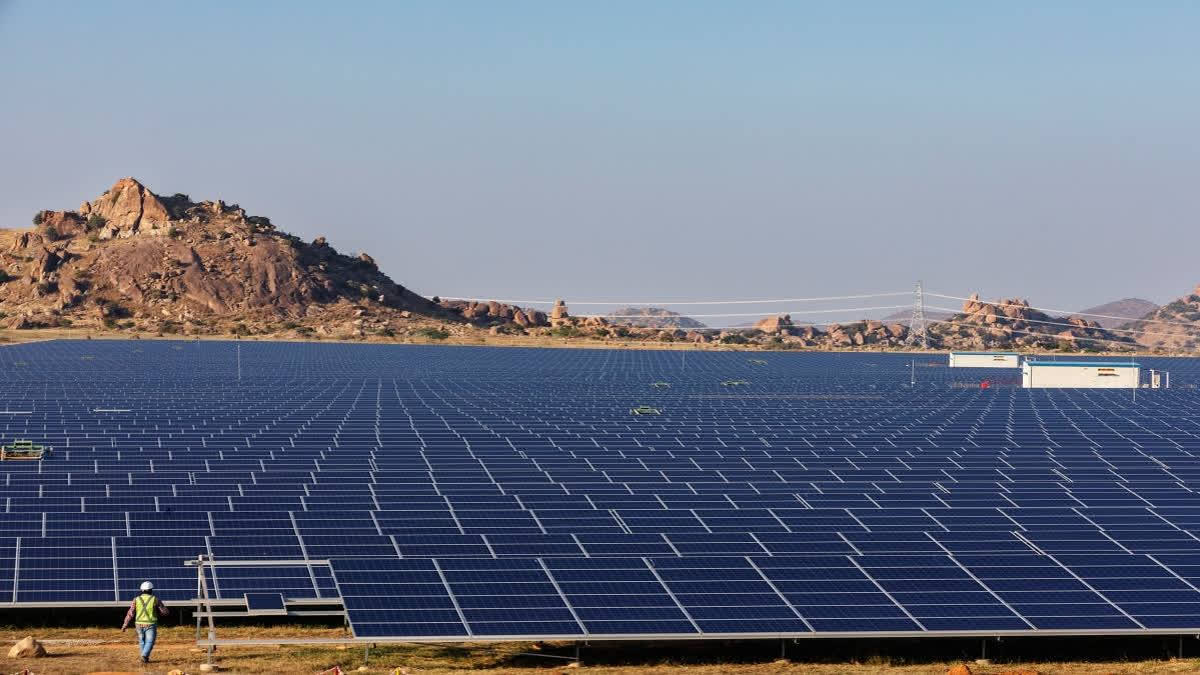New Delhi: As the world grapples with the escalating threat of climate change, solar energy is taking centre stage in a global shift toward sustainable power with nations investing heavily in solar infrastructure, according to a series of reports released on Tuesday.
The third edition of the World Solar Report series was released during the Seventh Assembly of the International Solar Alliance (ISA) here. The series comprises four reports focusing on global solar growth, investment trends, technological advancements, and Africa’s green hydrogen potential.
First released in 2022, the World Solar Report series provides valuable insights into trends, technologies, and policies shaping the solar energy sector. The reports serve as a key resource for policymakers, industry professionals, investors, researchers, and environmental advocates interested in understanding the role and growth of solar power as a vital element in the renewable energy transition. This year’s edition was released by the President of the ISA Assembly and Union Minister for New and Renewable Energy Pralhad Joshi.
“As the President of the International Solar Alliance, I would like to acknowledge that today the world stands united like never before, combining the global efforts towards the energy transition,” Joshi said while addressing Tuesday’s event. “The significance of advancing solar technology cannot be overstated as we move towards the clean energy transition. With the challenges posed by climate change, our collective efforts to innovate and implement this sustainable solution are more important than ever.”
Of the four reports of the series released, the ones on global solar growth, investment trends and technological advancements deserve particular attention.
Growth in the world solar energy market
According to the World Solar Market Report in the latest edition of the series, there has been exceptional growth in the solar energy sector with global capacity soaring from 1.22 GW in 2000 to 1,418.97 GW in 2023.
“In just two decades, global solar capacity has exploded from 1.22 GW in 2000 to an astounding 1,418.97 GW in 2023 - a staggering 40 per cent annual growth rate,” the report states. “In 2023 alone, 345.83 GW of solar power was added, accounting for three-quarters of all new renewable capacity worldwide. Solar generation has surged similarly, rocketing from 1.03 TWh (terawatt hours) in 2000 to 1,628.27 TWh in 2023.”
The report further states that, by the close of 2024, the capacity for global solar manufacturing is projected to exceed 1,100 GW, which is more than twice the anticipated demand for PV panels. In what is indicative of a trend towards greater affordability in solar technology, solar cell prices have reached $0.037 per watt.
In terms of employment, the clean energy industry has created 16.2 million jobs, with solar leading the charge at 7.1 million. This is an increase of 44 per cent from 2022’s 4.9 million.
“Global solar capacity is set to skyrocket to between 5457 and 7203 GW by 2030, driven by Paris Agreement commitments,” the report states. “This surge underscores the massive infrastructure push needed to meet climate goals.”
